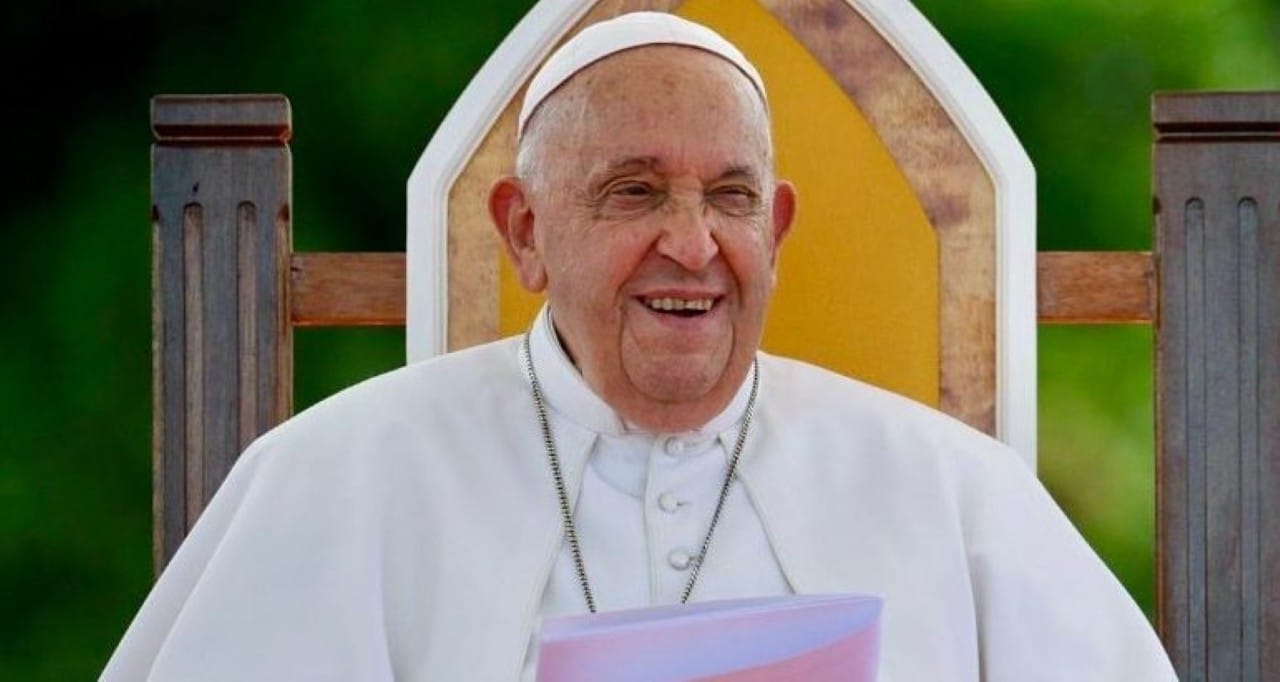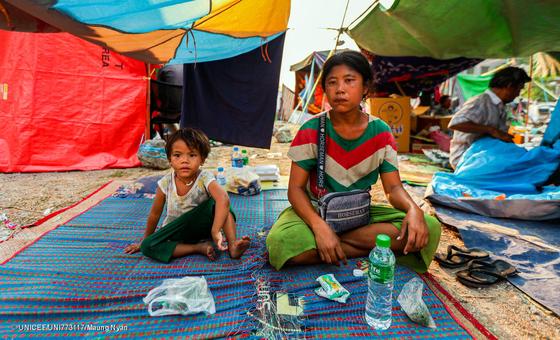
At 88 years old, Pope Francis left Gemelli Hospital in Rome on Sunday, March 23, after a 38-day hospitalization to treat bilateral pneumonia that pushed him into critical condition. Before returning to the Vatican, he made his first public appearance on the hospital’s tenth-floor balcony, waving to hundreds of faithful gathered below in a gesture of gratitude and hope. His discharge marked the end of a challenging period—the longest of his 12-year papacy, which began in 2013. Despite the improvement, doctors have prescribed at least two months of rest, along with respiratory physiotherapy and restrictions on strenuous activities, such as large group meetings. The ordeal, which started with bronchitis on February 14, escalated into a complex infection involving bacteria, viruses, and fungi, requiring intensive care and sparking global concern for his health.
Francis arrived at the hospital in mid-February struggling to speak and breathe, symptoms that soon unveiled the severity of his condition. Diagnosed with pneumonia in both lungs after a tomography scan, the pontiff faced a significant setback, compounded by the fact that he had part of one lung removed in his youth due to pleurisy. Over the course of his stay, he endured respiratory crises, mild kidney failure, and a severe coughing episode that necessitated non-invasive mechanical ventilation. Nevertheless, his recovery progressed steadily in recent weeks, allowing him to return to the Vatican in a stable yet fragile state.
The Pope’s homecoming brought relief to the faithful and Church officials alike. On Sunday morning, he offered a brief public blessing, singling out a woman holding yellow flowers among the crowd. “Thank you all,” he said softly, visibly moved, before retreating inside the hospital for final departure preparations. His nearly 40-day stay at Gemelli, the second-longest hospitalization of a pope in recent history, reignited discussions about Francis’s resilience and the challenges of leading the Catholic Church at an advanced age.
- Admission date: February 14.
- Diagnosis: bilateral pneumonia.
- Hospital stay: 38 days.
- Post-discharge plan: two months of rest.
A respiratory battle that pushed boundaries
Francis’s hospitalization began unexpectedly. On February 14, he was rushed to Gemelli Hospital after displaying severe bronchitis symptoms, including difficulty speaking and breathing. Initially, the Vatican described it as a respiratory infection, but further tests revealed double pneumonia, a condition affecting both lungs. The seriousness of the situation demanded immediate medical action, with supplemental oxygen and, at critical points, mechanical ventilation to support his breathing.
For the first three weeks, the Pope’s condition fluctuated. Frequent respiratory crises and a bout of mild kidney failure kept the medical team on high alert. Dr. Sergio Alfieri, head of the hospital’s medical-surgical department, led efforts to stabilize the pontiff, who also battled a polymicrobial infection—a rare mix of bacteria, viruses, and fungi. Improvement came in early March, when doctors discontinued mechanical ventilation and reduced oxygen dependency, indicating that Francis’s lungs were regaining function independently.
The Pope’s medical history added layers of complexity to his treatment. At 21, he underwent surgery to remove part of his right lung due to pleurisy, leaving him more susceptible to respiratory infections. This, combined with his advanced age, made the pneumonia particularly threatening. Yet, his recovery was hailed as remarkable, with daily incremental progress culminating in Sunday’s discharge—a milestone few anticipated so soon given the initial complications.
Gemelli Hospital’s role in the Pope’s recovery
Situated in Rome, Gemelli Hospital has a storied connection with popes, earning the nickname “third Vatican” for its recurring role in papal healthcare. It was there that Francis endured the toughest 38 days of his pontificate, receiving intensive care in a special tenth-floor suite reserved for pontiffs. The setup includes a private chapel, where he held masses even while hospitalized, preserving his spiritual routine amid treatment.
Led by Sergio Alfieri, the medical team employed a multifaceted strategy to tackle the bilateral pneumonia. Antibiotics, corticosteroids, and respiratory physiotherapy were combined to combat the infection and bolster Francis’s weakened lungs. Early on, a ventilation mask proved vital in preventing further deterioration, while regular scans tracked inflammation levels and the body’s response. By the third week, signs of recovery emerged, with the Pope able to get out of bed and engage in light activities like prayer and document review.
Confirmed on Saturday, March 22, the discharge came with strict guidelines. Francis will need two months of rest at the Vatican, avoiding physical exertion and frequent contact with large groups to prevent new infections. Respiratory physiotherapy will remain a daily fixture, aiding the recovery of lung capacity impaired by the illness. Once again, Gemelli proved a critical haven for the Pope, who was previously admitted there in 2021 for colon surgery and in 2023 for minor respiratory issues.
UPDATE: Pope Francis has just appeared at the window of the Gemelli Hospital. pic.twitter.com/YWMI1nGs67
— Fr Grant Ciccone (@UrbanHermit15) March 23, 2025
Timeline of the hospitalization: 38 days that shaped the papacy
Francis’s hospital journey was a test of endurance:
- February 14: admitted with an initial diagnosis of severe bronchitis.
- Late February: tomography confirms pneumonia in both lungs; critical condition reported.
- Early March: mechanical ventilation discontinued, gradual improvement begins.
- March 16: first photo of the Pope in the hospital released, showing him celebrating mass in the chapel.
- March 23: discharged after 38 days, with a public blessing from the balcony.
This stretch marked his longest absence from public duties since taking office.
Bilateral pneumonia: what lies behind the diagnosis
Bilateral pneumonia is an infection that affects both lungs, complicating breathing and heightening the risk of severe outcomes, especially in the elderly. For Francis, the illness emerged after bronchitis morphed into a polymicrobial condition involving multiple infectious agents. Rarer and more dangerous than unilateral pneumonia, it carries mortality rates of up to 30% in patients over 80, according to global statistics.
Francis’s initial symptoms—trouble speaking and breathing—are hallmarks of bronchitis, but the swift progression to pneumonia points to an aggressive secondary infection. Fever, persistent cough, and exhaustion are common signs, though the Pope also faced respiratory crises requiring urgent intervention. A mix of antibiotics and oxygen therapy was key to halting the disease’s advance, while physiotherapy helped prevent lasting lung damage.
Francis’s susceptibility to such infections is no surprise. Beyond the lung surgery in his youth, he has dealt with recurring respiratory troubles in recent years, including a 2023 hospitalization for bronchitis. The bilateral pneumonia, however, posed an unprecedented challenge, underscoring his health’s fragility at a time when the Church navigates internal reforms and global conflicts.
Faithful’s response: support and concern for the Pope
News of Francis’s hospitalization rallied millions of Catholics worldwide. In Rome, dozens of children and teens gathered beneath Gemelli’s windows in mid-March, holding Vatican-colored balloons—yellow and white—and signs of encouragement. “Ciao Papa Cesco, I love you so much,” read one, penned by a boy from the “castorini” scout group. The gesture touched the pontiff, who expressed gratitude for the prayers in written messages.
On social media, the hashtag #ForzaPapa trended, with followers sharing recovery wishes and memories of his 12-year papacy. Absent from the Sunday Angelus blessings for five weeks, Francis sent recorded and written messages, calling for peace in regions like Ukraine, Palestine, and Sudan. His first post-discharge appearance on the hospital balcony was broadcast live to St. Peter’s Square, where crowds watched on giant screens, visibly moved.
Support extended beyond the faithful. Religious and political figures, including Italian Prime Minister Giorgia Meloni, who visited him in the hospital, voiced relief at his recovery. Francis’s steadfast presence, even weakened, solidified his image as a resilient leader, inspiring hope amid adversity.
A challenging health history
Francis is no stranger to serious medical issues. Born Jorge Mario Bergoglio in 1936 in Argentina, he faced pleurisy at 21, an infection that led to the removal of part of his right lung. Performed in an era of less advanced medicine, the surgery left lasting effects, heightening his vulnerability to respiratory ailments. In 2021, he underwent colon surgery for diverticular stenosis, spending 10 days at Gemelli.
In recent years, minor respiratory infections have periodically disrupted his schedule. A 2023 bronchitis episode landed him in the hospital briefly, but the current crisis was far more severe. The bilateral pneumonia pushed his physical limits, yet it also showcased his resolve to lead the Church under trying conditions. While hospitalized, he approved ecclesiastical reforms and held occasional meetings with aides, proving his mind remains sharp despite bodily constraints.
His advanced age and medical past raise questions about the papacy’s future. Francis has hinted in interviews that resignation, like Bento XVI’s in 2013, is an option he’d consider. For now, his recovery signals intent to press on, albeit with diminished health.
Impact on the papal agenda: what changes post-discharge
Leaving the hospital doesn’t mean an immediate return to normalcy. The prescribed two-month rest period will pause public events and international trips. The 2025 Jubilee, a major Catholic milestone, looms ahead, and Francis’s health will be pivotal to its success. Pre-hospitalization plans for visits to Timor-Leste and Papua New Guinea are now indefinitely postponed.
At the Vatican, he’ll resume the Angelus and private audiences at a slower pace, steering clear of large crowds to safeguard his recovering lungs. Respiratory physiotherapy, including exercises to boost lung capacity, will be a daily focus in the coming months. Meanwhile, cardinals and aides will shoulder more administrative duties, keeping the Church operational during this transition.
Francis’s extended absence already left its mark. Over five weeks in the hospital, he missed traditional Lenten celebrations and his papacy’s anniversary on March 13. His limited return to the Vatican is seen as a stabilizing sign for the 1.3 billion Catholics tracking his journey.
Pneumonia worldwide: a public health concern
Pneumonia remains a leading cause of death among the elderly globally. Annually, an estimated 2.5 million people succumb to it, with the highest toll among those over 65 and young children. Bilateral pneumonia’s heightened lethality stems from its impact on both lungs, severely cutting oxygen supply to the blood.
Viral infections, pollution exposure, and weakened immune systems elevate the risk. For seniors like Francis, preexisting conditions—like his partial lung loss—worsen outcomes. His recovery highlights modern medicine’s strides, but also underscores prevention’s value, such as pneumococcal and flu vaccines recommended for at-risk groups.
In Brazil, the disease logs about 600,000 cases yearly, spiking in colder regions and winter months. Francis’s story resonates as a call for respiratory care, especially in aging populations.
What lies ahead in the coming months
With his discharge, Francis embarks on a new recovery phase at the Vatican. The two-month rest will feature a light schedule centered on physiotherapy and spiritual activities. He’ll continue private masses and oversee key decisions, but at a reduced intensity. The Vatican’s medical team, alongside Gemelli experts, will closely monitor his progress, tweaking treatment as needed.
By the end of this period, hopes are he’ll gradually resume full duties, though doctors caution his lung capacity may never fully rebound from the pneumonia. For the faithful, his presence—however limited—stands as a symbol of continuity amid global uncertainties.
- Post-discharge measures:
- Two months of rest at the Vatican.
- Daily respiratory physiotherapy.
- Limits on large gatherings.


